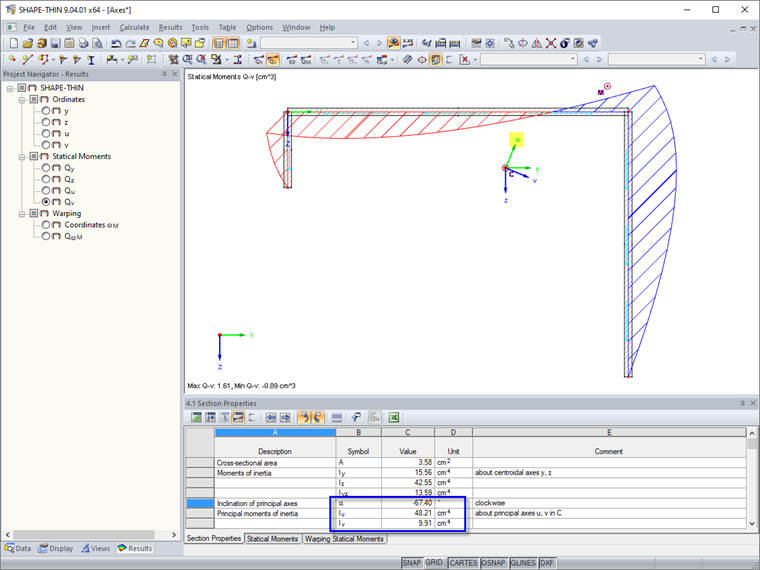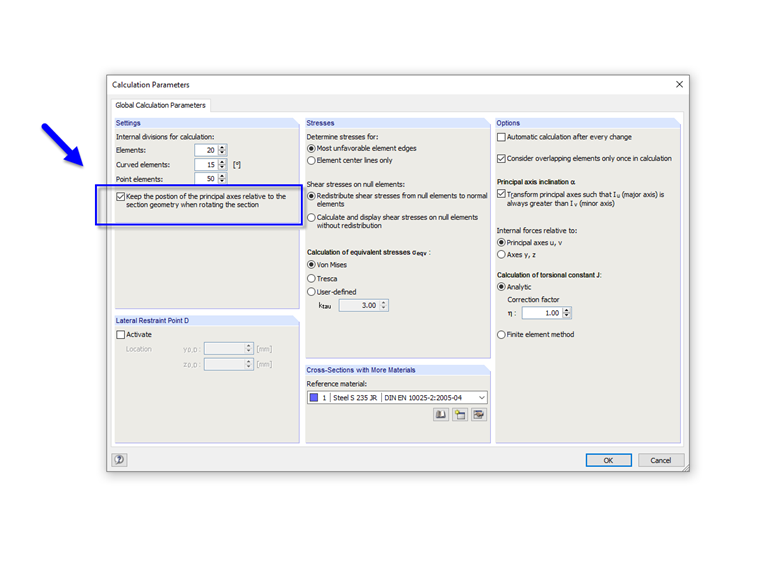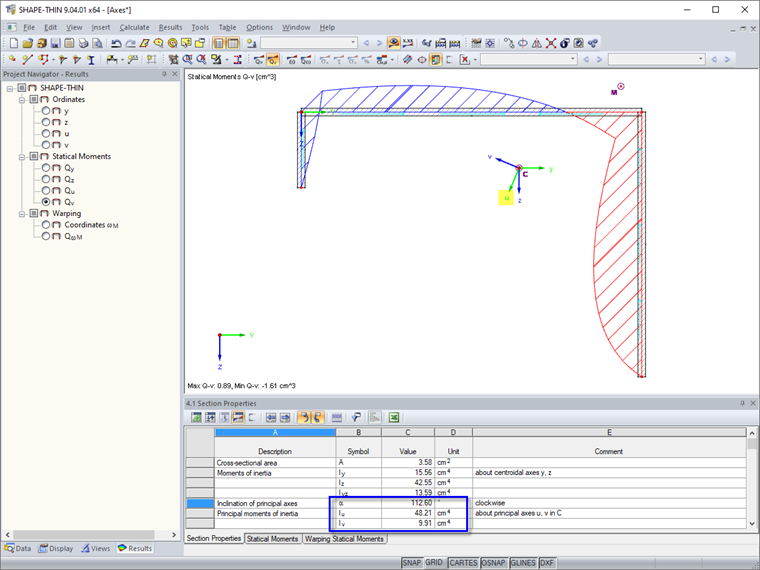SHAPE-THIN determines the principal axis angle α from the moments of inertia according to the following formula:
|
α |
Principal axis angle |
|
Iyz |
Biaxial second moment of area |
|
Iz |
Moment of inertia about the z-axis |
|
Iy |
Moment of inertia about the y-axis |
The axes y and z represent the centroidal axes parallel to the global axes Y and Z. In the case of a flat cross-section of which the width is greater than the height, it can happen that the "major" principal axis u points in the direction that actually represents the "minor" principal axis v. In this case, the table shows a moment of inertia Iu that is less than the moment of inertia Iv for the weak axis.
The "Transform principal axes so that Iu (major axis) is always greater than Iv (minor axis)" function allows you to compare the position of the principal axes with the input.
Thus, the cross-section does not need to be rotated 90° in order to obtain the moments of inertia as usual.
According to the formula given above, only angles between +90° and -90° are possible. If the cross-section is to be rotated and internal forces with reference to the principal axes u and v are already available, you can use an additional function to ensure that the position of the principal axes is retained when the cross-section is subsequently rotated: "Maintain the position of the axes related to the cross-section geometry when rotating the cross-section".
Thus, angles α greater than +90° or smaller than -90° are also possible.





